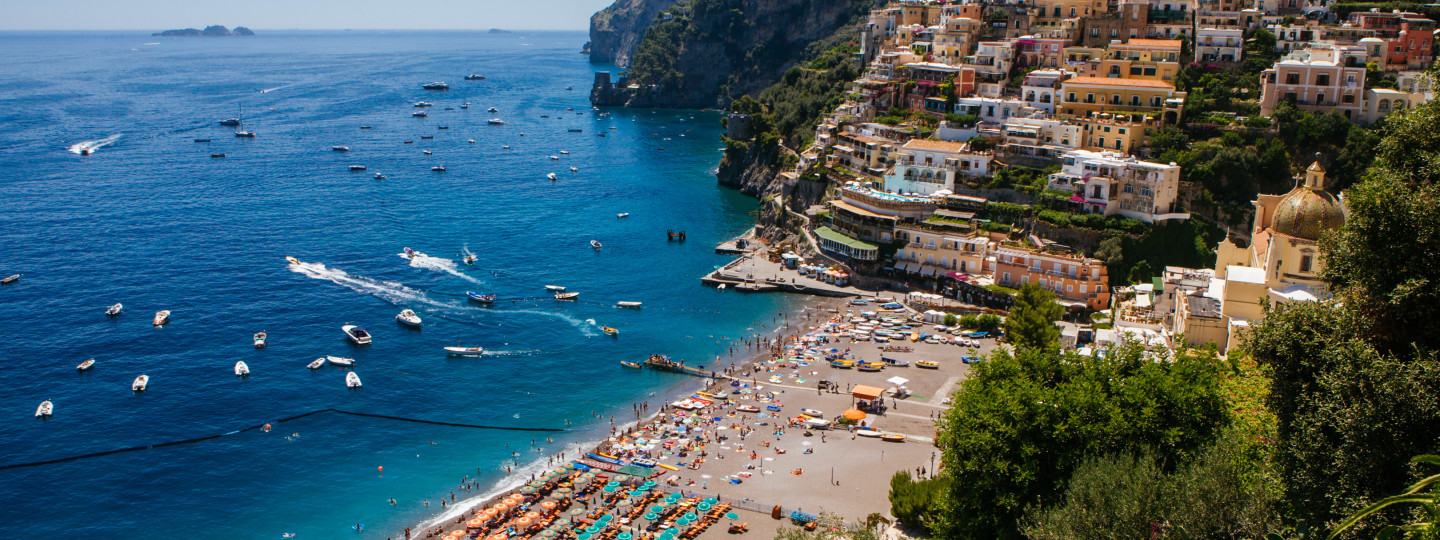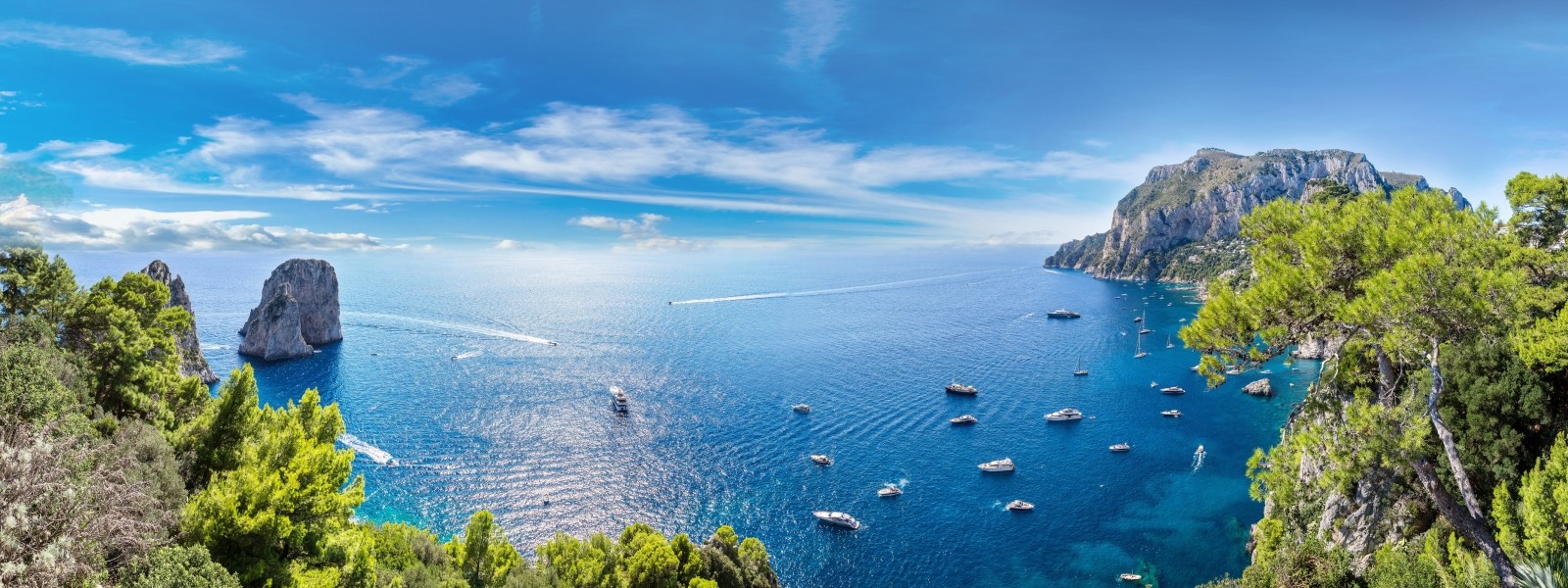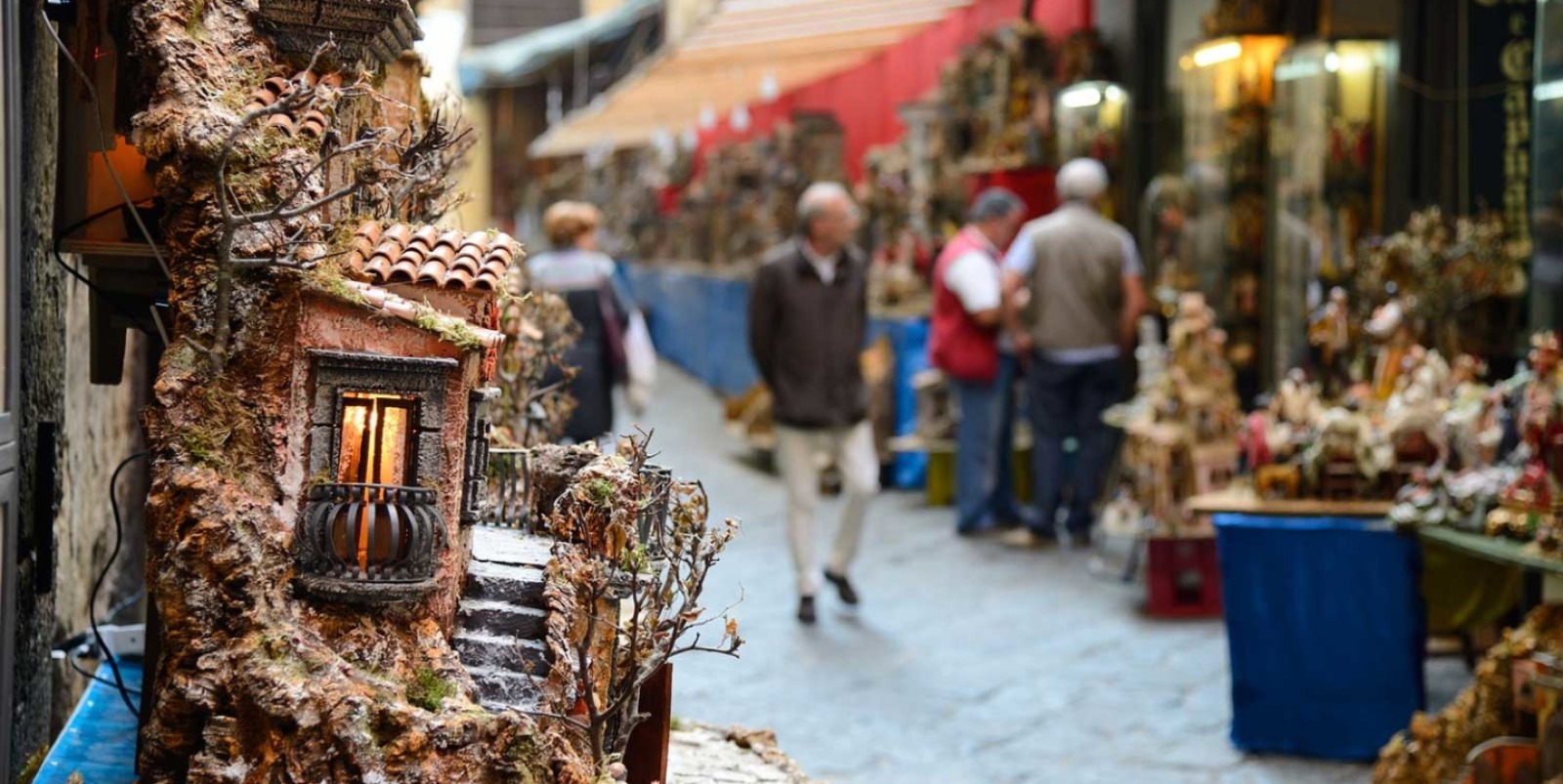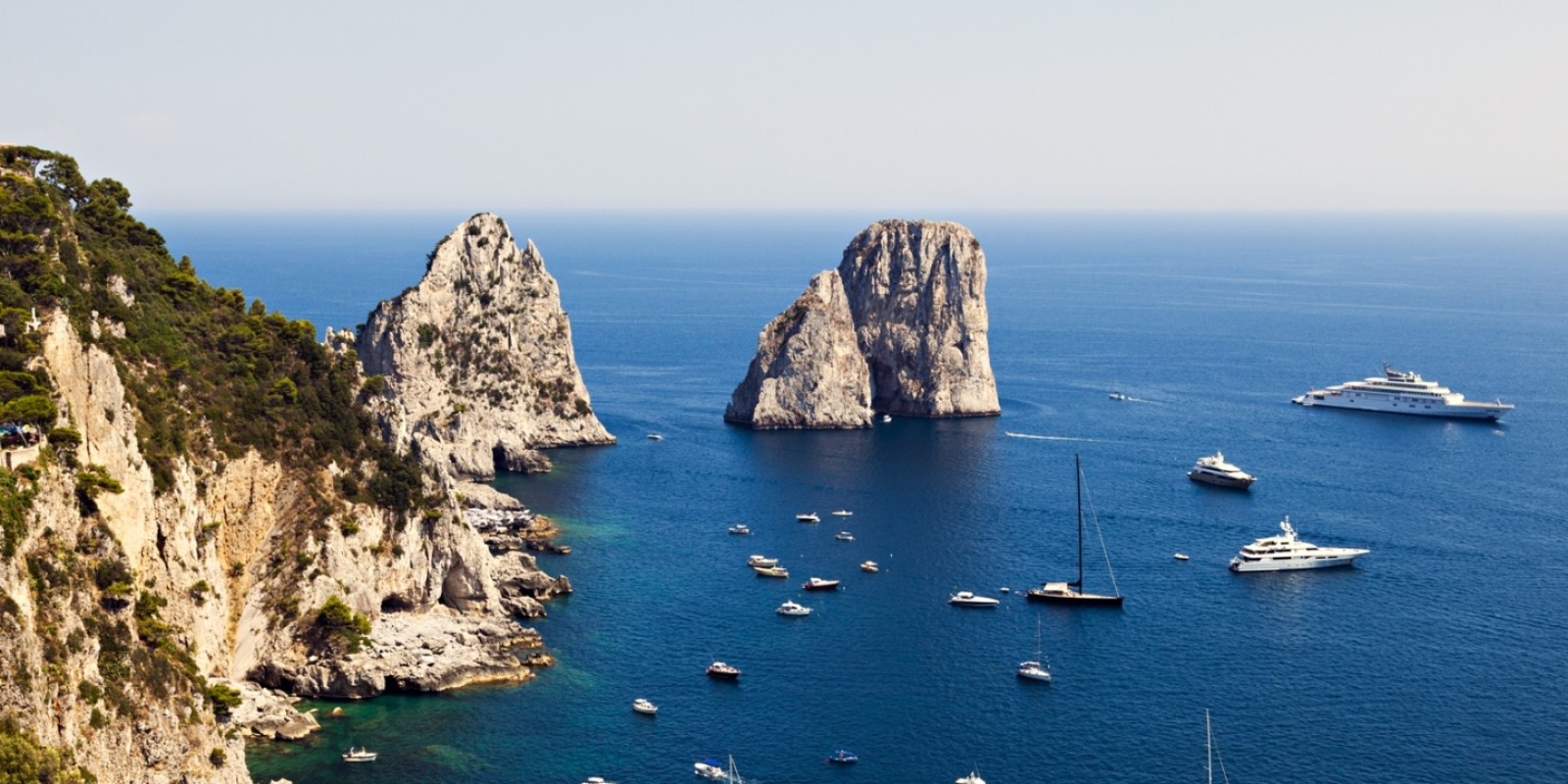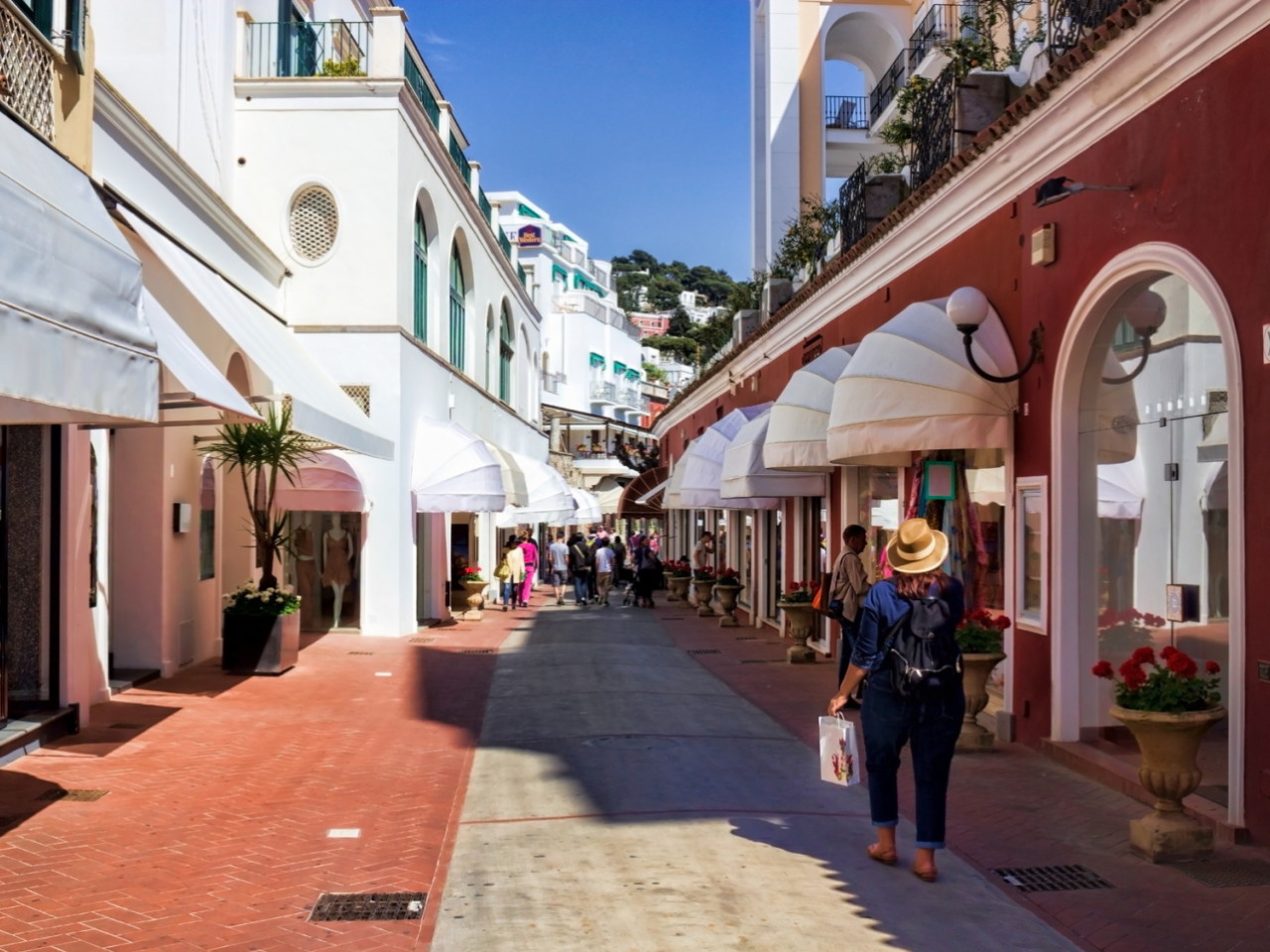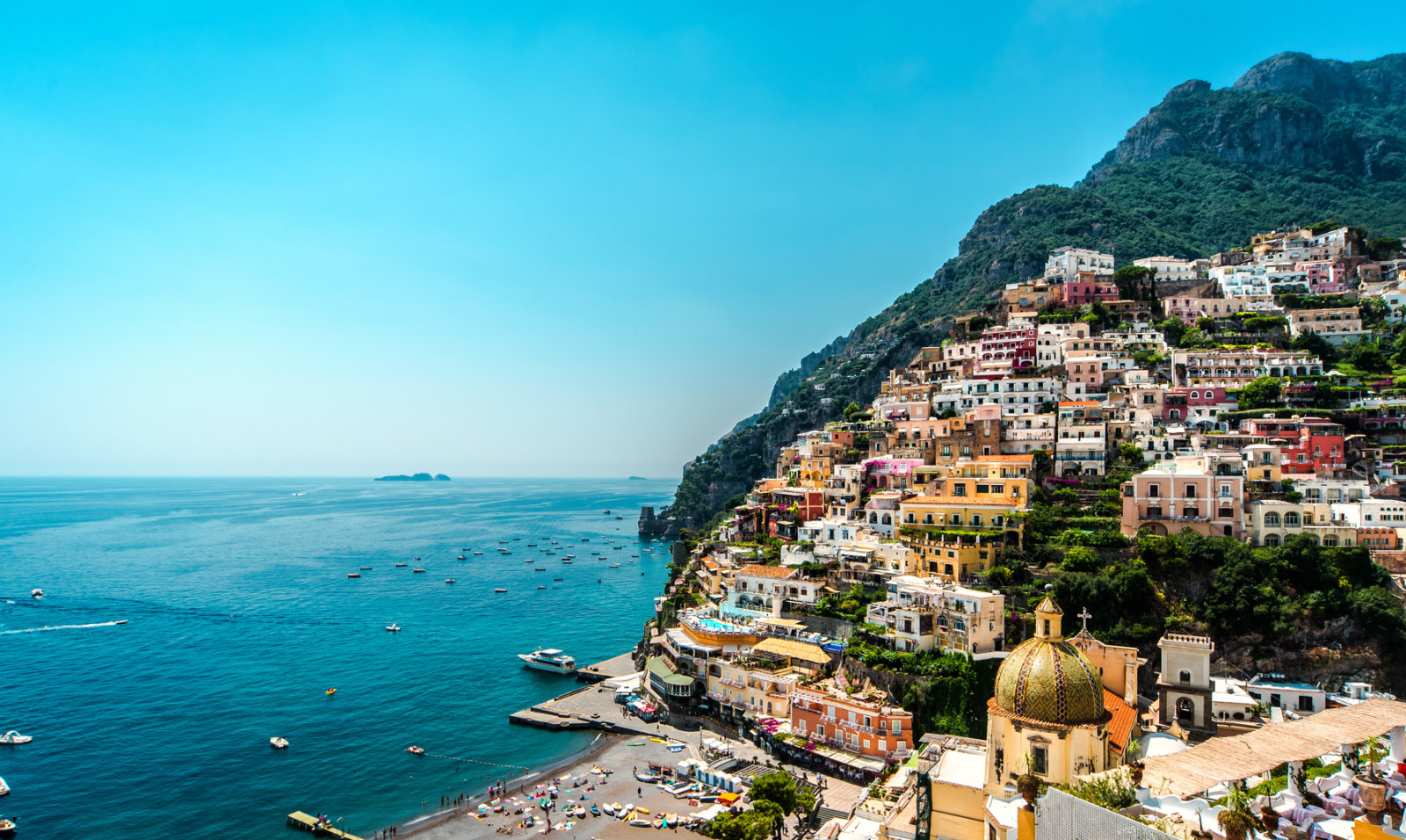Sorrento
Sorrento is one of the most important tourist centers of the Campania region. The city lies on a high ridge overlooking the sea which offers visitors a beautiful view of the Gulf of Naples.
This town has an ancient tradition of hospitality and welcome. Since ancient times, many travelers stopped here to enjoy the pleasures of the sea and the good food.
Besides the natural beauty, there are so many sites and artistic and monumental resources to see, such as the Church and the Convent of St. Francis, with its characteristic cloister, the Correale Museum which houses Greek and Roman artefacts, medieval marbles, remarkable furnishings of 'southern Italy from the fifteenth to the eighteenth century, paintings of the nineteenth century Neapolitan school and the school of Posillipo. It also holds pottery and ceramics, nativity figurines, clocks, lace and there is a whole section dedicated to local art of cabinet.
Sorrento is famous throughout the world for the production of oranges and lemons. The wisdom of the local chefs and the excellent quality of raw materials available in the area (vegetables, pasta, mozzarella cheese and fish) have allowed Sorrento to become a real capital of Mediterranean flavors with many starred restaurants in a radius of a few kilometers . The city is an excellent starting point for trips and trekking excursions, and to immerse yourself in unspoiled nature, characterized by a coastline full of inlets, such as the Bay of Jeranto, today under the protection of UNESCO.
Pompei
Pompeii is located on the slopes of Mount Vesuvius and it is the largest and most impressive archaeological site of Italy.
Crossroads of trades in the imperial Roman era, Pompeii was marked by the eruption of Vesuvius in 79 A.D., which erased any form of life and covered the vast area of a thick blanket of ash and lapilli stones.
Only in the mid-eighteenth century the excavations began, aimed at bringing to light the remains of the town, excavations that today constitute a strong tourist attraction.
Pompeii is a must for those who want to stroll through the streets of an ancient Roman city, visit the houses of the merchants and the patrician villas still intact and dive in a surreal and magical atmosphere.
Napoli
Beauty art and folklore, history, culture, cuisine all this blends in Naples for centuries, a city which lies on one of the most famous bay in the world, under the watchful gaze of Mount Vesuvius.
City of ancient art and history. Many events happened which made sure the city retained a strong cultural and intellectual vitality. From the founding to the Roman Empire presence, through the medieval works and the rich testimony of the Baroque period: Naples is a tangle that knows no equal in alleys and squares, monuments and churches, noble palaces and breathtaking views.
Capri
Located between the Gulf of Salerno, the Amalfi Coast and the Gulf of Naples, the island of Capri is known throughout the world for its incomparable natural and archaeological beauty.
The scent of flowers, the refined color facet, rugged cliffs that reach the crystal clear sea, the ancient alleyways that run through small houses surrounded by nature. Are just some of the features that have made famous this beautiful island situated in front of the Sorrento Coast.
Capri has always exercised over its visitors a great fascination: the Faraglioni, the Blue Grotto, the Piazzetta, the blue sky and the sea are the main attractive elements.
the nightlife is extremely pleasant and there are many trendy bars and exclusive nightclubs. In the evenings, in Capri, it is very easy to meet celebrities and famous Hollywood actors and international stars.
Positano
Steep stairs, almost hidden. Narrow streets, which are intertwined and entangled in a series of white houses, arches, domes and arcades with spectacular views of the Gulf of Salerno. Positano, is an explosion of beauty: “Positano bites deep. It is a dream place that isn’t quite real when you are there and becomes beckoningly real after you have gone. Its houses climb a hill so steep it would be a cliff except that stairs are cut in it. I believe that whereas most house foundations are vertical, in Positano they are horizontal. The small curving bay of unbelievably blue and green waterlaps gently on a beach of small pebbles. There is only one narrow street and it does not come down to the water. Everything else is stairs, some of them as steep as ladders. You do not walk to visit a friend, you either climb or slide.” (John Steinbeck, "Harper's Bazaar", May 1953)
Amalfi
A picturesque web of alleys and stairs, overlooking a sea of spectacular colors, is the landscape that enchants arriving at Amalfi, the town that gives its name to the whole coastline. Dominated by the magnificent cathedral dedicated to St. Andrew, it provides interesting evidence of its glorious past as a Maritime Republic.
Only at few kilometers, is located Furore a real contemporary open air art gallery with characteristic murals frescoed houses, public buildings and squares.
Many paths are available to explore this land and to discover its heart, with the colors and intense aromas of agave, the prickly pears, myrtle and rosemary.
But Furore is best known for its fiord and unexpected views, a spectacular and evocative power of nature.
Ravello
Another pearl of the coast is Ravello, an elegant and refined town, surrounded by nature and characterized by stately villas. Very famous for its Festival set in the gardens of Villa Rufolo, where an evocative set design joins the emotion of great music offering an experience of extraordinary intensity.
The heart of Ravello is Vescovado square framed by the architecture of Palazzo Rufolo and the Cathedral with its magnificent portal, the first one made with an innovative mold technique, and the 35 meters bell tower.

